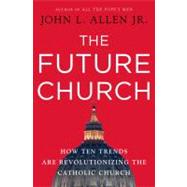
Note: Supplemental materials are not guaranteed with Rental or Used book purchases.
Purchase Benefits
What is included with this book?
JOHN L. ALLEN, Jr., is the Vatican correspondent for the National Catholic Reporter and a Vatican analyst for CNBN and National Public Radio. He is the author of Conclave, All the Pope’s Men, and Opus Dei, and writes the weekly Internet column, “The Word from Rome.” He lives in New York City and Rome.
| Acknowledgements | p. vii |
| Introduction | p. 1 |
| A World Church | p. 13 |
| Evangelical Catholicism | p. 54 |
| Islam | p. 95 |
| The New Demography | p. 141 |
| Expanding Lay Roles | p. 175 |
| The Biotech Revolution | p. 217 |
| Globalization | p. 256 |
| Ecology | p. 298 |
| Multipolarism | p. 338 |
| Pentecostalism | p. 375 |
| Trends That Are't | p. 414 |
| Catholicism in the Twenty-First Century | p. 427 |
| Suggestions for Further Readings | p. 457 |
| Index | p. 463 |
| Table of Contents provided by Ingram. All Rights Reserved. |
The New copy of this book will include any supplemental materials advertised. Please check the title of the book to determine if it should include any access cards, study guides, lab manuals, CDs, etc.
The Used, Rental and eBook copies of this book are not guaranteed to include any supplemental materials. Typically, only the book itself is included. This is true even if the title states it includes any access cards, study guides, lab manuals, CDs, etc.
Excerpted from The Future Church: How Ten Trends Are Revolutionizing the Catholic Church by John L. Allen
All rights reserved by the original copyright owners. Excerpts are provided for display purposes only and may not be reproduced, reprinted or distributed without the written permission of the publisher.